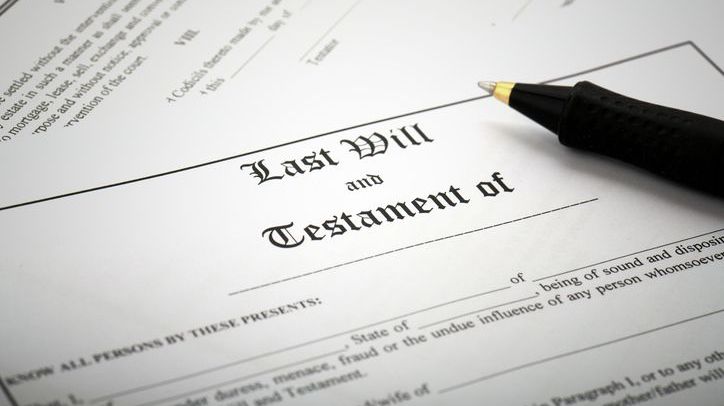Blended families face unique challenges when it comes to estate planning, as they must consider the needs and rights of both biological and stepfamily members. Effective estate planning for blended families involves carefully balancing financial and emotional priorities to protect all parties involved. Whether it’s through creating wills, establishing trusts or designating beneficiaries, the goal is to ensure that assets are distributed according to the wishes of the individual while minimizing potential conflicts among heirs.
A financial advisor with estate planning expertise can help you create a secure and harmonious future for your blended family.
Why Estate Planning for Blended Families Is Different
Estate planning for blended families introduces complexities that are not typically present in traditional family structures. For one, a blended family may include children from previous relationships, creating a unique set of considerations for inheritance and asset distribution. Unlike traditional families, where the default may be to pass assets directly to a spouse and then to children, blended families must account for multiple sets of beneficiaries.
One of the main differences in estate planning for blended families lies in the need to balance the interests of the current spouse with those of children from previous marriages. This often involves setting up trusts that provide for the spouse while preserving assets for the children. Without careful planning, there is a risk that children from a prior marriage might be unintentionally disinherited.
Another factor to consider is the need to clearly define which assets belong to whom. Making this clear can prevent disputes among family members and ensure that each party’s intentions are honored. Prenuptial agreements and postnuptial agreements can be instrumental in this process, as they outline the distribution of assets and thus can prevent conflicts.
Moreover, estate planning in blended families often requires addressing the role of stepchildren. In many jurisdictions, stepchildren are not automatically considered legal heirs, unless you have legally adopted them. Therefore, explicit inclusion in estate planning documents is necessary to provide for them.
Key Components of Estate Planning for Blended Families

Blended families face unique challenges in estate planning. Addressing the following key components can help in creating a comprehensive plan.
- Asset inventory and assessment: A detailed inventory and assessment of all assets — including property, investments and personal belongings — is foundational. This helps in understanding what needs to be distributed and to whom.
- Wills: Creating a will is fundamental in directing how assets should be distributed. This estate planning document outlines specific wishes for asset allocation and can prevent disputes among family members.
- Nominating a guardian for minor children: Blended families often include minor children from previous marriages. Designating a guardian ensures that children are cared for by a trusted individual in the event of a parent’s death.
- Marital trusts: Marital trusts provide for a surviving spouse while preserving assets for the deceased spouse’s children. This can protect the financial interests of both the current spouse and children from previous marriages.
- Bypass trusts: Also known as credit shelter trusts, bypass trusts allow a spouse to place assets into a trust that benefits the surviving spouse but ultimately passes to the children. This helps in minimizing estate taxes and preserving wealth for future generations.
- Beneficiary designations: Reviewing and updating beneficiary designations on life insurance policies, retirement accounts and other financial instruments ensures that assets are distributed according to current wishes and not outdated plans.
- Pre- and postnuptial agreements: These agreements outline the financial arrangements between spouses before and after marriage. They clarify the distribution of assets and can prevent conflicts, especially in blended families where financial obligations to children from previous relationships may exist.
Probate for Blended Families
Probate is the legal procedure that takes place after someone dies, involving the validation of the deceased’s will, the inventory of their assets and the distribution of those assets according to the will or state law if no will exists. Probate can be more complex for blended families, where one or both partners have children from previous relationships.
In blended families, probate might involve multiple parties with potentially conflicting interests, such as biological children, stepchildren and the surviving spouse. Each group may have different expectations or legal claims, which can lead to disputes. The executor, appointed by the will or the court, is responsible for managing this process, which includes settling debts, paying taxes and distributing assets to the rightful heirs.
Key considerations for blended families in probate include the clarity of the will and the designation of beneficiaries, as well as any pre-existing agreements like prenuptial or postnuptial agreements. A well-drafted estate plan can help mitigate conflicts by clearly outlining the distribution of assets and recognizing the unique dynamics of the family structure.
Common Pitfalls to Avoid

One common pitfall of estate planning for blended families is failing to update wills and beneficiary designations after remarriage. This can lead to unintended inheritances, where assets might go to an ex-spouse instead of a current spouse or children.
Meanwhile, a lack of clear communication about inheritance intentions can lead to disputes among family members. Not setting up a trust can create complications, especially when there are children from previous marriages. Trusts can help in ensuring that each spouse’s children receive their intended inheritance while providing for the surviving spouse.
Lastly, blended families might overlook the need for a detailed plan for health care decisions, which can cause confusion and conflict during critical moments.
Bottom Line
Crafting a carefully considered estate plan for a blended family can significantly alleviate potential conflicts and secure a harmonious future for all involved. By addressing the specific needs of both biological and stepfamily members, these plans ensure that assets are distributed according to personal wishes, providing clarity and fairness to all heirs. Trusts, clear beneficiary designations and explicit inclusion of all family members, including stepchildren, are crucial in this process.
Estate Planning Tips
- It’s important to plan for the possibility that you might become incapacitated and unable to manage your affairs. Establishing a durable power of attorney allows you to designate someone you trust to make financial and legal decisions on your behalf. Similarly, a medical power of attorney lets you appoint a person to make medical decisions for you if you are unable to do so. These documents ensure that your wishes are followed and reduce the burden on your loved ones during difficult times.
- Working with a financial advisor who specializes in estate planning can help you navigate the complexities of this important process. Finding a financial advisor doesn’t have to be hard. SmartAsset’s free tool matches you with up to three vetted financial advisors who serve your area, and you can have a free introductory call with your advisor matches to decide which one you feel is right for you. If you’re ready to find an advisor who can help you achieve your financial goals, get started now.
Photo credit: ©iStock.com/kate_sept2004, ©iStock.com/roberthyrons, ©iStock.com/FatCamera
